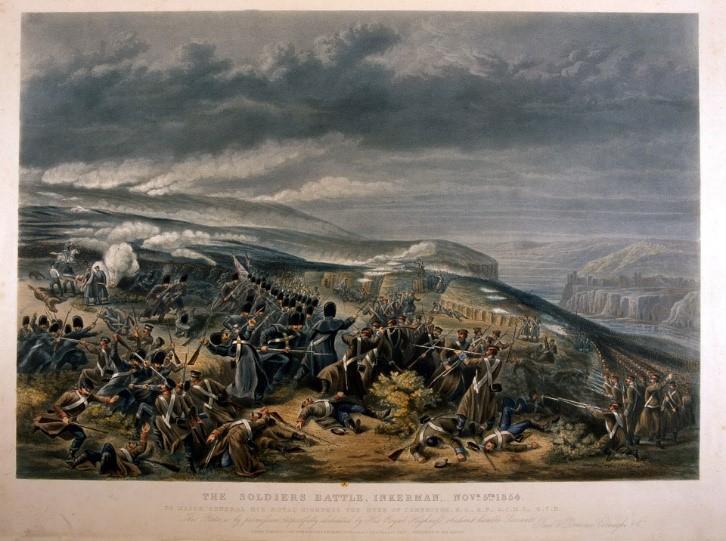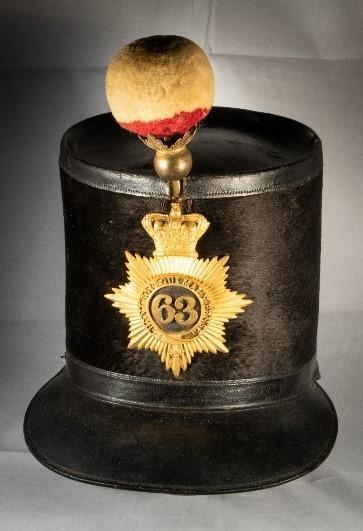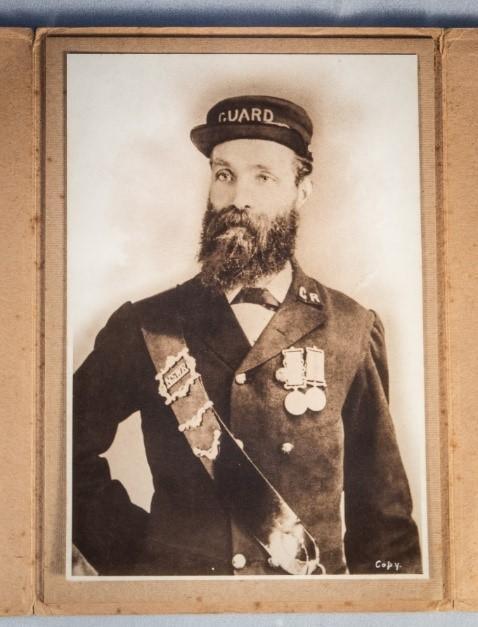Fog blanketed the Inkerman Heights in the first weeks of the winter of 1854. In the predawn darkness of 5 November, British picquets, manning exposed outposts on the forward slopes, heard the unmistakable clink and rattle of accoutrements against the bodies of marching soldiers as they came through the grey blanket.
The Russians were advancing to contact.
In the last week of September, a British expeditionary force, under the one-armed Waterloo veteran, Lord Raglan, invested Sebastopol, the largest Russian port on the Crimean Peninsula. The city of Sebastopol[1], then as now, spreads along the southern banks of the Black Sea bay that shares its name.
The entrenched siege lines that ran in a crescent around the city were occupied by the French in the west and the British in the east, their right flank dominated by the heights of Inkerman. The Russians they faced occupied the city and were supported by a field army in the interior that provided a constant threat to the besiegers.
The first major attempt by the Russians to break the siege occurred on 25 and 26 October. Russian units attacked the British right of the line, the high ground above the Tchernaya River. If the line could be broken there a corridor would open that would allow a connection of those besieged with the Russian army advancing from the heart of the peninsula. The Russian force of six battalions of infantry and four cannons (approximately 4,300 men) was led by Colonel Federoff. Advancing up the ravines, the Russians ran into British outposts. Tenacious defence by these isolated companies of British troops inflicted heavy casualties on the Russian units and they fell back.
Despite the casualties the Russians had learnt a valuable lesson; that the right of the British line was lightly held, and the established strong points were not sited for mutual defence.[2]
The first British outpost encountered by Federoff’s men, as they sallied forth on 26 October, was held by Lieutenant John Conolly, a 25-year-old Irishman, and a half company of his soldiers from the 49th Regiment. In the hand-to-hand fighting, Conolly snapped his sword but continued to fight the Russians using his telescope as a club. For his actions that day Conolly was awarded the Victoria Cross. After the war Conolly VC stayed in the army. He married, had children, and eventually rose to the rank of lieutenant colonel before retiring to Ireland. His son John migrated to the Australian colonies, prospected for opals in Queensland and gold at Coolgardie in Western Australia, then entered politics. He left the Western Australian parliament to fight the Boers as a sergeant with the 2nd Contingent, Western Australian Mounted Infantry, in the war in South Africa (1899-1902).[3]
Using intelligence gathered from the first attack, the Russian commander-in-chief, Prince Menshikov, planned another assault on the British lines at Inkerman. At dawn on 5 November, the Russians, advancing eastwards from the besieged city, would link up with another Russian force arriving from the interior across the Tchernaya River. Together they would form up at the base of the slopes and advance along the ravines that led down from the Inkerman heights. While this attack was being pressed a third body of Russian troops would move up from the south-west to hit the British position from the rear.
The combined Russian force totalled almost 35,000 men, mainly infantry, supported by artillery and cavalry; the fearsome Cossacks. Facing them was a largely British army of just over 15,000.[4]
Despite the best laid plans, the Battle of Inkerman dissolved into a series of disorganised and chaotic fights. The battlefield was deceptively steep. The ravines were tangled with often precipitous walls. Units of soldiers charged and counter-attacked each other through thickets of two-metre high scrub. Dense fog prevented any attempts at coordinated command and control in the early phases of the battle. Men shot, stabbed and clubbed each other. Percussion cap rifles, effective to hundreds of metres, were used at point blank range. Cannon-fired shrapnel tore into tightly packed groups of soldiers ripping limbs and heads from torsos, covering the broken ground with gore.
Inkerman has endured in the annals of British military history as ‘the soldier’s battle’. The combination of fog and the terrain deprived commanders of their ability to lead. Their men, blind and confused, fought for their lives and for their mates. There were too many acts of bravery and sacrifice to count.
At Inkerman the 63rd Regiment was part of Lieutenant-General Sir George Cathcart’s 4th Division.[5] When a Russian force attacked the British position from the right rear Cathcart led his division in a charge that drove back the attackers but advanced too far and exposed them to flanking fire. Cathcart and hundreds of his men were killed before they could fall back.[6]
In response to the stories of Crimean War battles like Inkerman, Queen Victoria demanded a brand-new award to be the ultimate recognition for outstanding acts of valour. The medal was named for her - the Victoria Cross (VC). One hundred and eleven VCs were awarded during the war, 15 to those who fought at Inkerman on 5 November.[7]
CRIMEAN WAR VETERANS IN AUSTRALIA
Australian colonists had followed the course of the war in the Crimea with interest, voraciously scanning the newspaper for the latest reports battles and casualties.[8] On the last day of September 1857, the 77th Regiment disembarked at Sydney Cove, marched along Bridge Street, up Macquarie and College streets before wheeling uphill to Victoria Barracks in Paddington. The Sydney Morning Herald reported:
“Yesterday will be long remembered as the day on which the 77th Regiment landed on our shores, not only because of the arrival amongst us of a body of gallant men who had won for themselves a glorious name and the page of history; but also as that on which the greatest number of the citizens of Sydney ever congregated together, and on which a general feeling of enthusiasm was exhibited such as never before marked any of the assemblages out of doors.”[9]
The regiment was quite a sight in Sydney. The men were dressed in the new uniform, a practical thigh-length red jacket and smart beaver skin and leather 1855 Pattern shako, rather than the long tailed coatee and clumsy Albert shako of the outgoing garrison regiment. All of the soldiers wore flowing beards, the sign of service in the Crimea.
It is curious that, despite the popularity of the 77th Regiment, in the colony the award of Victoria Crosses to two soldiers of the regiment for valour in the Crimean War “were conferred hastily, almost furtively, as the regiment was about to leave Sydney to help spread suppress the Indian mutiny”. This is according to Dr Craig Wilcox in Red Coat Dreaming, his insightful study of Australia’s relationship with the British army in the 19th century.[10]
The VCs to 19-year-old Sergeant John Park and 28-year-old Private Alexander Wright were well earned. Both soldiers had been severely wounded in the Crimea and each had performed with great gallantry during the siege of Sebastopol. Park had also served with distinction at the battles of Alma and Inkerman.[11] Both of these soldiers were gazetted for their awards in the London Gazette of 24 February 1857, however they are unlikely to have received their medals prior to embarking for Australia.
Wilcox’s assumption that the award ceremony was kept small in scale as the regiment was preparing to leave the colony of NSW for the Great Mutiny in India is undoubtedly valid, however another factor may have been the criticisms of the regiment that grew from the much-publicised drunken murder of Private Samuel Bryant by Private John Wood, both soldiers of the 77th, in front of the guard post at the government powder magazine on Goat Island in Sydney Harbour just before Christmas 1857.[12] We can only wonder if Wood’s alcohol fuelled nightmares of the Crimea caused him to kill his mate.
These survivors of the Crimean War, both serving and discharged, were the first trickle of a flood of veterans to the colony.
From the end of the Crimean War (1853–56) and the Great Mutiny (India, 1857–59) that followed it, thousands of British veterans were encouraged to migrate to the Australian colonies. The British government initiated a series of investigations focusing on NSW and the recently renamed Tasmania as suitable homes and opportunities of future employment for these soldier settlers.
The photograph above is a portrait of John Sinclair in his uniform as a railway guard for New South Wales Government Railways at Newtown in Sydney c.1870. Sinclair had been a cavalryman in the 11th Hussars, a regiment of Britain’s light cavalry brigade in the Crimea. At just 15 years of age he was one of the legendary 600 who had participated in the charge at Balaclava made famous by Alfred, Lord Tennyson in a poem that every Australian school student had to learn through the late 19th century.
The Charge of the Light Brigade
I
Half a league, half a league,
Half a league onward,
All in the valley of Death
Rode the six hundred.
“Forward, the Light Brigade!
Charge for the guns!” he said.
Into the valley of Death
Rode the six hundred.
II
“Forward, the Light Brigade!”
Was there a man dismayed?
Not though the soldier knew
Someone had blundered.
Theirs not to make reply,
Theirs not to reason why,
Theirs but to do and die.
Into the valley of Death
Rode the six hundred.
III
Cannon to right of them,
Cannon to left of them,
Cannon in front of them
Volleyed and thundered;
Stormed at with shot and shell,
Boldly they rode and well,
Into the jaws of Death,
Into the mouth of hell
Rode the six hundred.
IV
Flashed all their sabres bare,
Flashed as they turned in air
Sabring the gunners there,
Charging an army, while
All the world wondered.
Plunged in the battery-smoke
Right through the line they broke;
Cossack and Russian
Reeled from the sabre stroke
Shattered and sundered.
Then they rode back, but not
Not the six hundred.
V
Cannon to right of them,
Cannon to left of them,
Cannon behind them
Volleyed and thundered;
Stormed at with shot and shell,
While horse and hero fell.
They that had fought so well
Came through the jaws of Death,
Back from the mouth of hell,
All that was left of them,
Left of six hundred.
VI
When can their glory fade?
O the wild charge they made!
All the world wondered.
Honour the charge they made!
Honour the Light Brigade,
Noble six hundred![13]
Article by Brad Manera
FOOTNOTES:
[1] Today the city is usually spelled ‘Sevastopol’ however, for the purposes of this article, and as explanation of the title of the village of Sebastopol 15km south of Temora NSW, we will use the historic British spelling of the battle honour.
[2] Mercer, Patrick Inkerman 1854; The soldier's battle, Osprey Publishing, Oxford, 1988, p 40.
[3] John Richard Arthur Conolly – Biographical Register of Members of the Parliament of Western Australia. Retrieved 2 June 2016.
[4] Mercer Inkerman 1854, op cit, pp 90-91.
[5] The NSW village of Cathcart, beyond the national park above Eden, is named for the heroic but doomed general.
[6] This shako is frequently referred to as the 1855 Pattern. Some early examples may have been available in time for the battle of Inkerman however most troops would have fought the battle wearing either the Albert Pattern shako or a more comfortable and practical forage cap.
[7] The Register of the Victoria Cross, This England Books, Redhill, Surrey, 1997, various biographical entries.
[8] Wilcox, Craig Red Coat Dreaming, Cambridge University Press, 2009, p 53.
[9] Sydney Morning Herald, Thursday 1 October 1857, p 4.
[10] Wilcox Red Coat Dreaming op cit, p 67.
[11] Private Alexander Wright VC was killed in action at Calcutta (modern Kolkata) during the Great Mutiny in 1858. His body was not recovered, he has no known grave. Sergeant John Park VC died of sunstroke in India in 1863.
[12] Sydney Morning Herald 12 & 14 December 1857.
[13] Lord Tennyson, Alfred The Charge of the Light Brigade (poem) published in The Examiner, 9 December 1854.


